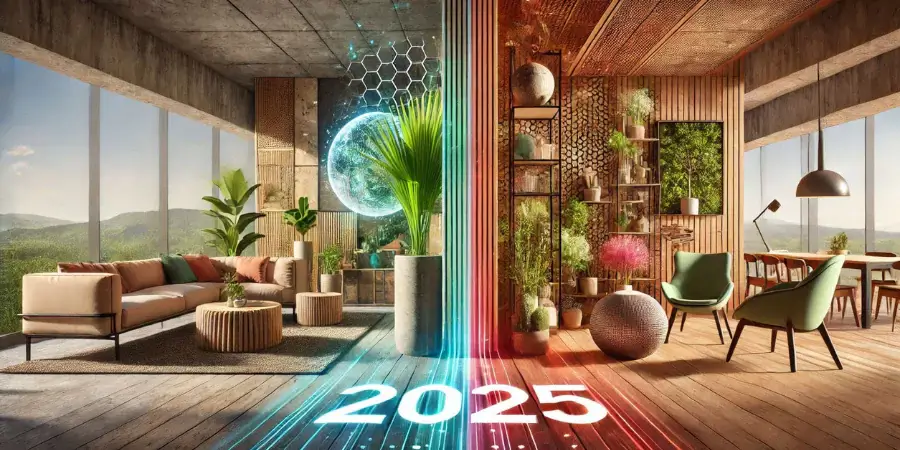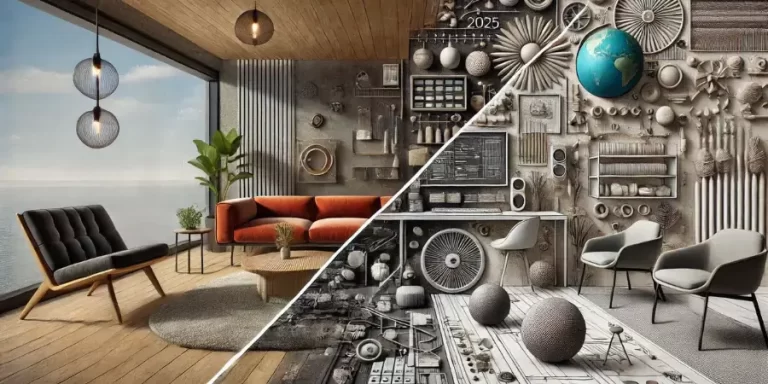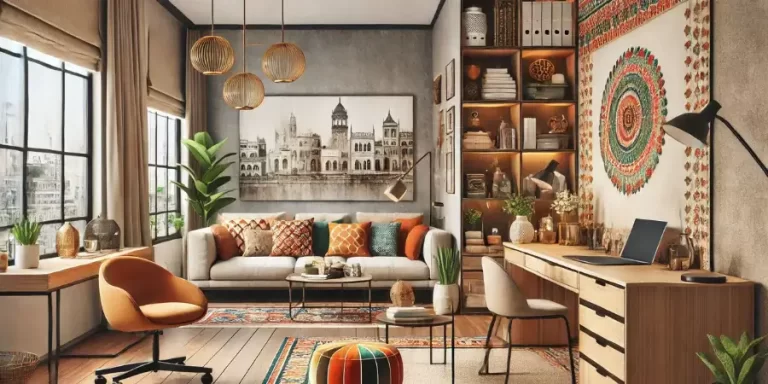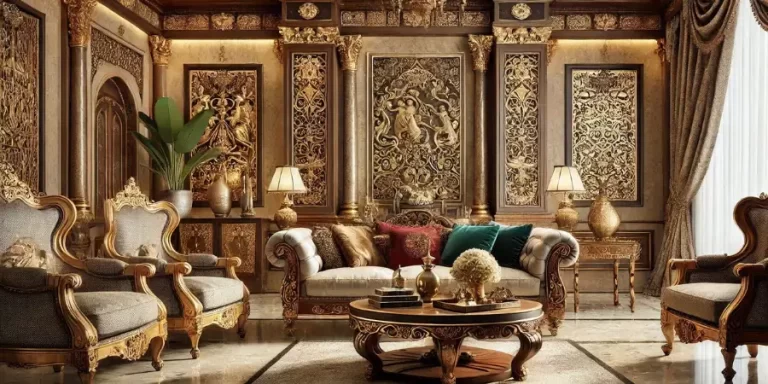Interior design is a constantly evolving field, influenced by social, technological, and cultural changes. As we approach 2025, several emerging trends are expected to shape how we design our spaces, from sustainable materials to the integration of smart technologies. Here’s a look at what’s in and what’s out in the world of interior design for the upcoming year.
What’s In for 2025:
- Sustainable and Eco-Friendly Design
Sustainability continues to be one of the most significant trends in interior design. As environmental awareness grows, consumers are looking for eco-friendly materials, energy-efficient appliances, and sustainable design practices. Expect to see more designers incorporating recycled materials, energy-efficient lighting, and furniture made from sustainable sources. Bamboo, reclaimed wood, and natural stone will dominate interiors as part of the push toward reducing carbon footprints.
- Biophilic Design
Biophilic design, which connects indoor spaces with nature, is gaining momentum. Incorporating plants, natural textures, and green walls will become more common in both residential and commercial spaces. This trend promotes wellness by improving air quality, reducing stress, and increasing productivity. Large windows that allow for more natural light, organic shapes, and the use of natural materials like stone and wood will be integrated into designs to enhance the connection with the environment.
- Smart Home Technology
The integration of smart technologies in the home is on the rise. By 2025, more homes will feature integrated systems for lighting, security, temperature control, and entertainment. Voice-activated devices, smart thermostats, and automated lighting systems will be commonplace, creating a seamless, efficient living environment. The technology will be integrated into the design subtly, ensuring that gadgets blend with aesthetics without disrupting the flow of the space.
- Multifunctional Furniture
With more people living in smaller spaces, multifunctional furniture is becoming essential. Pieces that serve multiple purposes, like sofa beds, fold-out desks, and extendable dining tables, will become more popular. This trend not only saves space but also adds a layer of practicality and flexibility to interiors. Look for modular and adaptable furniture systems that can be customized to fit different needs and lifestyles.
- Maximalism
After years of minimalist designs, maximalism is making a comeback. Think bold patterns, vibrant colors, and an eclectic mix of furniture and decor. This trend allows for personal expression, encouraging individuals to create spaces that reflect their unique style. Layers of rich textures, mixed patterns, and a variety of colors will make interiors feel more lively and individualistic. Art, collectibles, and even vintage furniture will be incorporated to create personalized and immersive spaces.
- Vintage and Retro Revival
Retro and vintage styles, particularly from the mid-20th century, are returning in a big way. Furniture and decor inspired by the 1960s, 70s, and 80s will see a resurgence in popularity. Think bold geometric patterns, retro lighting fixtures, and nostalgic color palettes like burnt orange, mustard yellow, and olive green. Vintage finds and antique furniture will add warmth and character to modern interiors, creating a sense of timelessness and nostalgia.
- Wellness-Centered Spaces
As wellness continues to be a priority in people’s lives, the focus on creating calming, restorative spaces in the home will grow. Interior designs in 2025 will integrate wellness features such as dedicated meditation rooms, yoga spaces, and spa-like bathrooms. Soothing colors, natural light, and elements that promote relaxation—such as soundproofing, air purifiers, and aromatic diffusers—will be common in both homes and offices.
What’s Out for 2025:
- Overly Sterile Minimalism
While minimalism has been a dominating trend in recent years, its overly sterile and bare approach is starting to fade. The trend of “white walls, empty spaces” will be replaced by a desire for spaces that feel lived-in, personal, and expressive. People are moving away from minimalism’s starkness, opting for designs that are more welcoming, vibrant, and full of character.
- All-White Kitchens
For years, all-white kitchens have been the epitome of modern design, but the trend is beginning to lose its appeal. While white is still a classic choice, homeowners are gravitating toward more vibrant hues, textures, and contrasts in their kitchens. Darker cabinets, bold backsplashes, and a mix of materials—like stone and wood—are taking over, creating more warmth and personality in this important space.
- Industrial Style
The industrial style, characterized by exposed brick, metal fixtures, and utilitarian design, is becoming less popular in residential spaces. While it remains relevant in some urban settings and commercial projects, the cold, hard edges of industrial interiors are being replaced by warmer, more inviting designs that prioritize comfort and personalization. Think soft textiles, natural finishes, and cozy furnishings rather than raw concrete and steel.
- Matchy-Matchy Decor
The trend of everything in a room matching perfectly is on its way out. In 2025, interior design will embrace a more eclectic and personal approach. Mixing colors, textures, and patterns will be more acceptable, as people opt for unique, individualized spaces that reflect their personality. Perfectly coordinated decor will give way to spaces that feel more authentic and lived-in.
- Fast Furniture
With the focus on sustainability growing, the trend of buying cheap, mass-produced, and disposable furniture is fading. Consumers are increasingly interested in quality, craftsmanship, and longevity when it comes to home furnishings. The era of flat-pack, short-lived furniture is being replaced by custom, sustainable, and well-made pieces that stand the test of time.
- Overly Themed Rooms
While themed rooms, such as Disney-inspired or strictly one-color rooms, have been popular in the past, they are losing favor. In 2025, the focus will shift to creating versatile, timeless spaces that can grow with the family or adapt to different tastes over time. Themed rooms often feel restrictive and are less likely to stand the test of time. The future is in versatile, well-balanced interiors that can evolve with the needs and preferences of the occupants.
- Excessive Use of Fast Fashion in Furniture
Just as fast fashion in clothing has been criticized for its negative environmental impact, so too has fast furniture. Cheap, mass-produced furniture that lacks longevity is no longer as desirable. The demand for quality craftsmanship, durable materials, and sustainable sourcing is on the rise. Designers and homeowners alike are moving toward pieces that can withstand years of use rather than disposable, trendy items.
Conclusion
The interior design landscape in 2025 will be a dynamic blend of sustainability, technology, and personalized aesthetics. Trends like biophilic design, multifunctional furniture, and vintage revivals will dominate, while outdated styles like all-white kitchens and sterile minimalism will take a backseat. As we embrace more sustainable, wellness-focused, and eclectic designs, the future of interiors looks vibrant, functional, and deeply personal. Stay ahead of the curve by embracing these trends and letting them inspire the spaces you create in the coming year.




